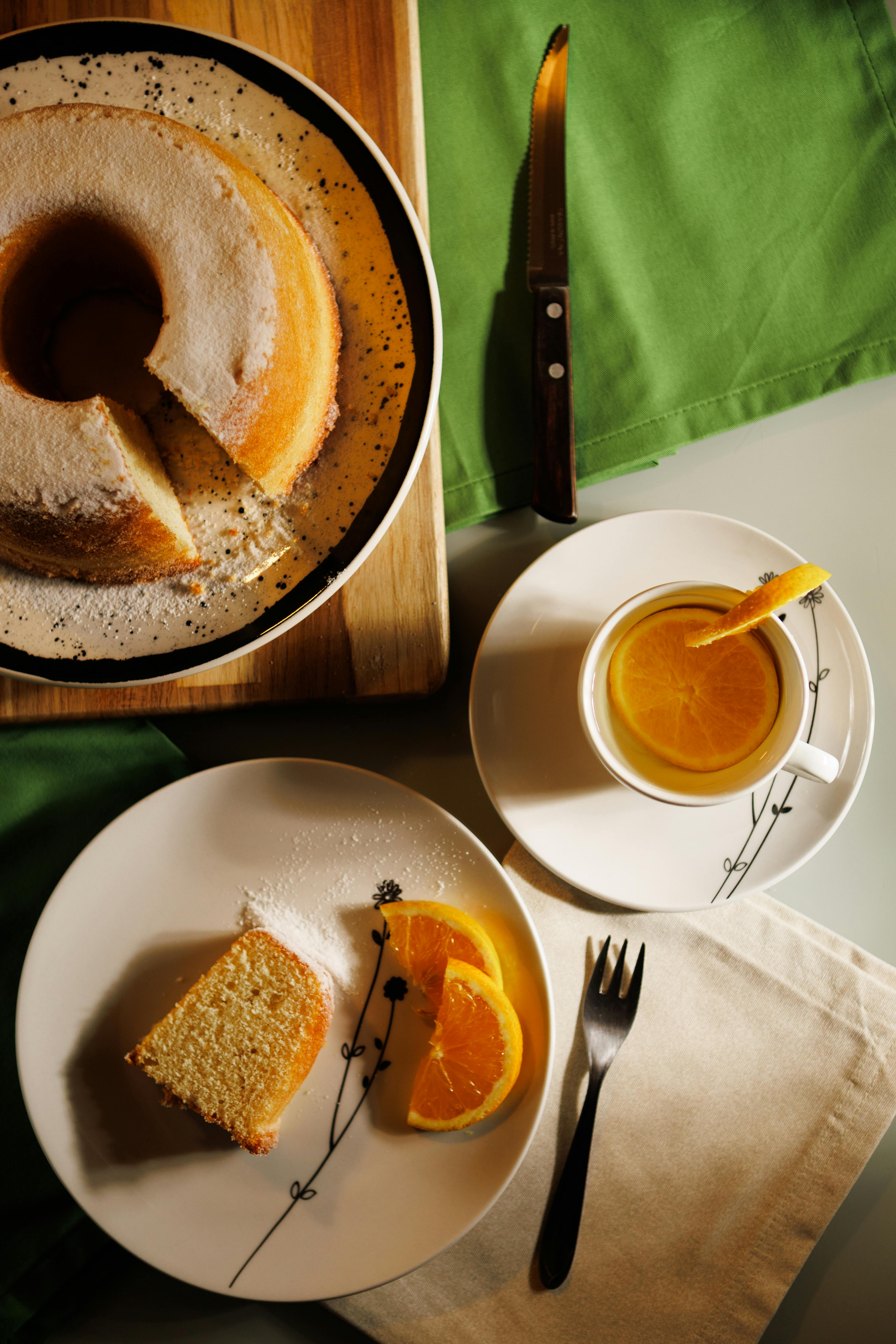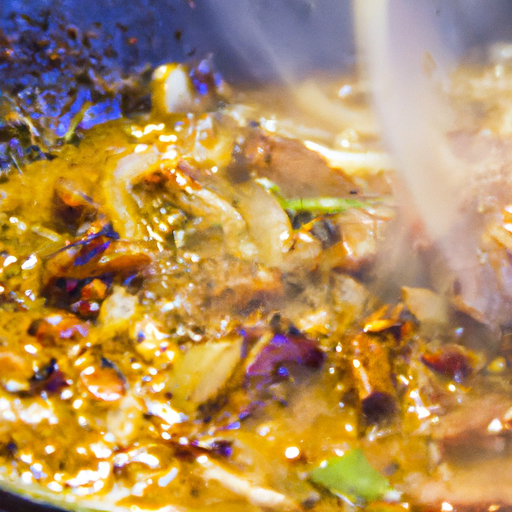Are you ready to take your culinary skills to the next level? Look no further than Tastepan’s expert cooking tips and techniques. Our comprehensive guides and videos will transform you into a kitchen pro, whether you’re aiming to enhance your knife skills, elevate your grilling game, or unlock the secrets of baking. In this article, we’ll explore the intriguing world of flavor science and how you can use it to elevate your dishes to new heights. Get ready to tantalize your taste buds and impress your family and friends with dishes that are not only delicious but also scientifically perfected.

1. Understanding Flavor
1.1 The Basics of Flavor
Flavor is a combination of taste and aroma that creates a sensory experience when we eat or drink. It is an essential aspect of our enjoyment of food and plays a crucial role in our perception of different dishes. Understanding the basics of flavor is the first step towards enhancing your culinary skills and creating delicious meals.
1.2 The Five Basic Tastes
There are five primary tastes: sweet, sour, salty, bitter, and umami. These tastes are detected by taste buds on our tongues and each contributes to the overall flavor profile of a dish. Knowing how to balance these tastes is essential in creating well-rounded and enjoyable flavors in your cooking.
1.3 The Role of Smell in Flavor Perception
While taste plays a significant role in flavor perception, our sense of smell is equally important. The aroma of food can greatly enhance or detract from its flavor. When we eat, the smells of the food travel to our olfactory system through the retronasal passage, and this information combines with taste sensations to create a full flavor experience.
1.4 The Power of Umami
Umami is often described as the fifth taste, and it is characterized as a savory, meaty, or brothy flavor. This taste is found in foods such as soy sauce, tomatoes, mushrooms, and aged cheeses. Understanding how to harness umami in your cooking can greatly enhance the depth and richness of flavors in your dishes.
1.5 The Influence of Texture on Flavor
Texture is another element that affects our perception of flavor. The way a food feels in our mouths can greatly impact our overall enjoyment of it. Understanding how to manipulate texture, whether it’s through techniques like braising, frying, or using ingredients with varying textures, can elevate the flavor experience of your dishes.
2. Enhancing Flavors Through Cooking Techniques
2.1 The Maillard Reaction and Browning
The Maillard reaction is a chemical reaction that occurs when amino acids and reducing sugars are heated together. It is responsible for the browning and caramelization of foods, creating rich flavors and aromas. Mastering the Maillard reaction can add depth and complexity to your cooking.
2.2 Caramelization
Caramelization is the process by which sugars are heated, breaking down and transforming into new compounds that are responsible for the distinct flavors and aromas we associate with caramel. By properly caramelizing ingredients like onions, vegetables, or even meats, you can unlock a whole new level of sweetness and complexity in your dishes.
2.3 Reduction
Reduction is a cooking technique that involves simmering a liquid to concentrate its flavors by evaporating water. By reducing sauces, stocks, or even wine, you can intensify their flavors, creating a more robust and flavorful base for your dishes.
2.4 Fermentation
Fermentation is a natural process in which microorganisms, such as yeast or bacteria, convert the sugars in food into alcohol or acids. It is widely used in the production of alcoholic beverages, bread, and various condiments. Exploring fermentation techniques can introduce unique and complex flavors into your cooking.
2.5 Infusion
Infusion is a method of extracting flavors from ingredients by steeping them in a liquid, such as water, oil, or alcohol. This technique allows for the transfer of aromatic compounds and flavors, resulting in infused liquids that can enhance the taste of your dishes. Understanding how to properly infuse ingredients will open up a world of possibilities for creating flavorful liquids and oils to use in your cooking.

3. The Role of Ingredients in Flavor
3.1 Choosing Fresh and High-Quality Ingredients
The quality of ingredients you use has a direct impact on the flavors of your dishes. Fresh, ripe produce will have a more vibrant and intense flavor compared to under-ripe or poor-quality ingredients. By selecting the best ingredients available, you can ensure that your dishes shine with the best possible flavors.
3.2 Understanding Flavor Pairings
Certain ingredients naturally complement each other, creating harmonious flavor combinations. Understanding flavor pairings can help you create well-balanced and delicious dishes. Some classic examples include pairing tomatoes with basil, or chocolate with coffee. Experimenting with different flavor pairings will allow you to discover new and exciting taste combinations.
3.3 Using Herbs and Spices to Add Depth
Herbs and spices are essential tools for enhancing flavor in cooking. They add depth, complexity, and unique aromas to dishes. Each herb and spice has its own distinct flavor profile and can transform a dish from ordinary to extraordinary. Learning how to properly use herbs and spices will elevate your cooking to a whole new level.
3.4 Incorporating Acidity and Brightness
Acidity is an important component of flavor, adding brightness and balance to dishes. Ingredients like lemon juice, vinegar, or even fermented foods can provide a tangy and refreshing taste that cuts through rich or fatty flavors. By incorporating the right amount of acidity, you can elevate the overall flavor profile of your dishes.
3.5 Balancing Sweetness and Bitterness
The balance between sweetness and bitterness is crucial in creating well-rounded flavors. Sweetness can enhance flavors and provide a pleasant contrast to bitter notes. Understanding how to balance these tastes can help you create dishes that are both enjoyable and complex.
4. The Science of Seasoning
4.1 The Importance of Salt
Salt is an essential seasoning that plays a vital role in enhancing flavors. It not only adds its own taste but also helps to balance other flavors in a dish. Understanding how to use salt effectively is key to achieving well-seasoned and delicious meals.
4.2 Exploring Different Types of Salt
There are various types of salt available, each with its own unique characteristics and flavors. From kosher salt to sea salt to Himalayan pink salt, exploring different types of salt can add nuance and complexity to your cooking.
4.3 Using Salt to Amplify Flavors
Salt has the ability to amplify and enhance the flavors of other ingredients in a dish. By properly seasoning with salt, you can elevate the taste of your dishes and make them more enjoyable.
4.4 Managing Salt Levels in Your Dishes
Finding the right balance of salt in your dishes is crucial for achieving well-rounded flavors. Over-salting or under-salting can greatly impact the overall taste of a dish. Knowing how to manage the salt levels in your cooking will ensure that your flavors are perfectly balanced.

5. The Psychology of Flavor
5.1 The Impact of Visual Presentation
The way food is presented can greatly influence our perception of flavor. Appealing and visually appealing dishes can make the dining experience more enjoyable. Understanding the principles of plating and presentation can enhance the overall flavor experience.
5.2 The Influence of Sound and Environment
Our surroundings and the sounds we hear while eating can also affect our perception of flavor. The ambiance, music, and noise level of a restaurant or dining space can impact our enjoyment of the food. Creating a pleasant and comfortable environment can enhance the overall flavor experience.
5.3 Memory and Emotional Associations
Our memories and emotional associations with certain foods can greatly impact our perception of flavor. Positive memories or experiences associated with specific dishes can make them taste even better. Understanding the power of memory and emotion in flavor perception can help you create memorable and enjoyable dining experiences.
5.4 Novelty and Surprise in Flavor Experience
Novelty and surprise can greatly enhance the flavor experience. Unexpected or unique flavor combinations can pique our interest and make the dining experience more exciting. Taking risks and experimenting with different flavors can lead to delightful and surprising results.
6. Enhancing Flavors with Cooking Tools
6.1 Using Sous Vide Techniques to Preserve Flavor
Sous vide is a cooking technique that involves sealing food in a vacuum-sealed bag and cooking it in a water bath at a precise temperature. This method helps to preserve flavors and juices, resulting in tender and flavorful dishes.
6.2 Smoking and Grilling for Intense Flavors
Smoking and grilling are techniques that impart smoky and charred flavors to food. Whether it’s using a smoker or a charcoal grill, these methods can add depth and complexity to your dishes, enhancing the overall flavor profile.
6.3 Pressure Cooking for Infusion
Pressure cooking is a method that uses steam pressure to cook food quickly. This technique can help infuse flavors into ingredients and tenderize tougher cuts of meat. By utilizing pressure cooking, you can unlock intense flavors in a fraction of the time.
6.4 Utilizing the Power of Blenders and Food Processors
Blenders and food processors are versatile tools that can be used to enhance flavors. From creating smooth sauces and purees to grinding spices and nuts, these appliances can take your cooking to the next level by maximizing the release of flavors from ingredients.
6.5 Fermentation Equipment for Unique Flavors
Having the right fermentation equipment, such as jars, fermentation weights, or airlocks, can help you experiment with fermenting your own foods. Fermentation is a process that can create unique and complex flavors, allowing you to create your own signature dishes.
7. Unlocking Natural Flavor Extracts and Enhancers
7.1 Extracting Flavor from Fruits and Vegetables
Fruits and vegetables are excellent sources of natural flavors. By extracting the juice, zest, or essential oils from these ingredients, you can incorporate their concentrated flavors into your cooking. From citrusy notes to aromatic essences, natural extracts can take your dishes to new heights.
7.2 Utilizing Natural Flavor Enhancers
Certain ingredients can enhance the flavors of other foods without overpowering them. Ingredients like fish sauce, miso paste, or soy sauce can add depth and umami to your dishes, elevating the overall flavor profile.
7.3 Exploring Extracts, Spices, and Essences
There are a variety of extracts, spices, and essences available that can add unique and intense flavors to your cooking. From vanilla extract to truffle oil to saffron threads, these ingredients can be used sparingly to enhance the taste of your dishes and create memorable flavor experiences.
8. The Role of Culinary Science in Flavor Enhancement
8.1 Molecular Gastronomy and New Techniques
Molecular gastronomy is a field that explores the science behind cooking and uses innovative techniques to create unique and exciting flavors. From spherification to liquid nitrogen freezing, these techniques can push the boundaries of traditional cooking, resulting in novel and unforgettable flavor experiences.
8.2 The Science Behind Umami
Umami, the fifth taste, has gained significant attention in recent years. Understanding the science behind umami can help you harness its power to enhance flavors in various dishes. From using ingredients like soy sauce to understanding the role of glutamate receptors, delving into the science of umami can take your cooking to new heights.
8.3 Understanding the Flavor Matrix
The flavor matrix is a concept that explores the interactions between different ingredients in a dish. By understanding how certain flavors complement or contrast with each other, you can create well-balanced and harmonious flavor profiles. Understanding the flavor matrix can help you make informed decisions when developing new recipes or modifying existing ones.
8.4 Sensory Evaluation and Test Kitchen Methods
Sensory evaluation is a process used to scientifically assess the flavor characteristics of food. By using methods such as blind tastings or sensory panels, you can obtain objective feedback on your dishes and make adjustments to enhance their flavors. Incorporating sensory evaluation and test kitchen methods into your cooking can help you refine your skills and create consistently delicious meals.
9. The Art of Pairing Food and Wine for Enhanced Flavors
9.1 Understanding Complementary and Contrasting Flavors
Pairing food and wine involves finding combinations of flavors that complement or contrast with each other. Certain flavors in food can enhance the flavors of specific wines, while others can create interesting and unique contrasts. Understanding the principles of flavor pairing can help you create harmonious and delightful combinations.
9.2 The Role of Tannins, Acidity, and Sweetness
Tannins, acidity, and sweetness are key elements in both food and wine. Balancing these components is essential for successful food and wine pairings. Understanding how these factors interact can guide you in choosing the right wine to enhance the flavors of your dishes.
9.3 Tips for Successful Food and Wine Pairings
Pairing food and wine can be a daunting task, but with some basic guidelines, you can create enjoyable combinations. Consider the intensity of flavors, acidity, and texture of both the food and the wine. Experimentation and personal preferences play a significant role in discovering unique and exciting pairings.
10. Exploring Cultural and Regional Flavor Profiles
10.1 Discovering Global Flavor Trends
Exploring global flavor trends can open up new possibilities for your cooking. By immersing yourself in different culinary traditions, you can learn about unique ingredients, techniques, and flavor combinations. Incorporating global flavors into your dishes can add excitement and diversity to your culinary repertoire.
10.2 Traditional Flavor Profiles from Different Regions
Every region has its own traditional flavor profiles that reflect its culinary heritage and local ingredients. From the spice blends of India to the umami-rich dishes of Japan, each cuisine offers a distinct and exciting range of flavors. Exploring traditional flavor profiles can inspire you to incorporate new tastes and ingredients into your cooking.
10.3 Fusion Cuisine and Flavor Innovation
Fusion cuisine combines elements from different culinary traditions, resulting in exciting and unique flavor combinations. By incorporating ingredients and techniques from various cuisines, you can create innovative dishes that surprise and delight the palate. Embracing fusion cuisine allows for endless creativity and the opportunity to develop your own signature flavors.
In conclusion, flavor is a multifaceted concept that encompasses taste, smell, texture, and presentation. By understanding the basics of flavor, exploring different cooking techniques and ingredients, mastering the art of seasoning, and considering the psychological aspects of taste, you can enhance your cooking and create truly memorable and delicious dishes. Whether you’re a home cook or a professional chef, the science and art of flavor enhancement can take your culinary skills to new heights and bring joy to your dining experiences.

